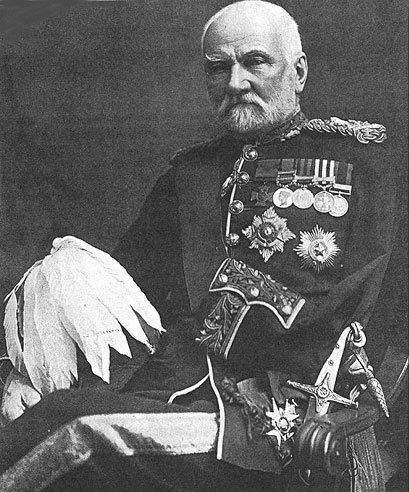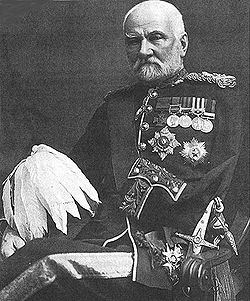Name Sam Browne | ||
 | ||
Born 3 October 1824Barrackpore, British India ( 1824-10-03 ) Battles/wars Indian MutinySecond Anglo-Afghan War | ||
Swinging london ambrose sam browne the show is over 1934
General Sir Samuel James Browne (3 October 1824 – 14 March 1901) was a British Indian Army cavalry officer in India and Afghanistan, known best as the namesake of the Sam Browne belt. He was a British recipient of the Victoria Cross, the most prestigious award for gallantry in combat that can be awarded to British and Commonwealth forces.
Contents
- Swinging london ambrose sam browne the show is over 1934
- Lew stone sam browne cheek to cheek 1935 irving berlin songs
- Early life
- Indian Mutiny
- Sam Browne belt
- Later life
- References

Lew stone sam browne cheek to cheek 1935 irving berlin songs
Early life
He was born in Barrackpore, India, the son of Dr. John Browne, a surgeon of the Bengal Medical Service and his wife Charlotte (née Swinton). Browne joined the 46th Bengal Native Infantry as a subaltern, participating in action at Ramnuggar, Sadoolapore, Chillianwalla and Gujarat. In 1849 he was made a lieutenant and tasked with raising a cavalry force, to be designated the 2nd Punjab Irregular Cavalry and later incorporated into the regular force. He would command this unit for the next five years. Later (1904) the unit would be re-designated as the 22nd Sam Browne's Cavalry (Frontier Force) in his honour.
Indian Mutiny
Browne commanded the 2nd Punjab in several engagements, and was decorated for action during the Bozdar Expedition of 1857, being promoted to captain.
Browne was awarded the Victoria Cross for actions on 31 August 1858 at Seerporah, Rohilkhand, Uttar Pradesh, India. His citation reads:
His Victoria Cross is displayed at the National Army Museum.
Sam Browne belt
Sometime after this incident he began to wear the accoutrement which bears his name, as compensation for the difficulty his disability caused with wearing his officer's sword. A Sam Browne belt is a wide belt, usually leather, supported by a narrower strap passing diagonally over the right shoulder; the diagonal strap stabilizes the scabbard of a sword if worn. Later such a belt would be adopted by other officers who knew Browne in India, but it was not to become used commonly by the British Army until after his retirement. Browne's original "Sam Browne" belt is possessed presently by the National Army Museum in Chelsea.
Later life
Browne retired from the army in 1898, relocated to Ryde on the Isle of Wight, England, and died there at the age of 76. His remains were cremated but there is a memorial marker dedicated to Browne in the Ryde New Cemetery, as well as plaques at St Paul's Cathedral in London and Lahore Cathedral in India. His grave was restored in 2010.
